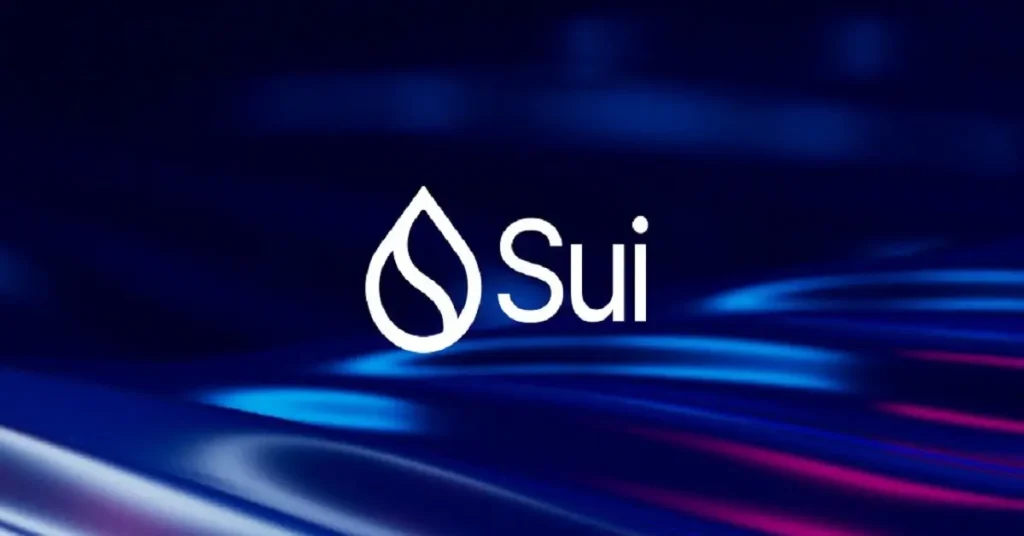Sui is a permissionless Layer-1 blockchain that enables the development of diverse applications at high speed and low cost. Designed to be developer-friendly, it allows developers to easily build their applications, while also ensuring a smooth and efficient user experience. The Sui token (SUI) serves as the native cryptocurrency of this network, facilitating payments and various transactions.
To enhance network security, the Sui project utilizes multiple advanced cryptographic algorithms and can quickly switch between them. Sui employs a Delegated Proof of Stake (DPoS) consensus mechanism for validating on-chain transactions, focusing on providing the necessary infrastructure for validation and improving transaction speeds, similar to other Layer-1 solutions like Bitcoin and Ethereum.
History of the SUI
Sui launched its testnet in 2022 and its mainnet in May 2023. The blockchain was developed by Mysten Labs, a company led by several senior executives from Meta. In September 2022, Mysten Labs successfully raised $300 million to further develop Sui, with major investors including Circle, Binance Labs, and Lightspeed Venture Partners.The Sui Foundation, an independent organization, supports the Sui community and related projects.
Upon launch, the foundation collaborated with centralized exchanges such as KuCoin, OKX, and Bybit to sell SUI tokens to Discord users and the customers of these exchanges. Binance users staked over $4 billion in tokens to acquire SUI coins.
The Sui Foundation aims to make Web3 accessible to over one billion users worldwide through the development and global reach of the Sui blockchain. Key goals include transparent service delivery to the Sui community, open communication to foster trust among users, and encouraging community participation in Sui activities and projects.
The foundation believes that all users should have equal access to Sui’s applications, and to ensure fair distribution of resources, rules must be applied uniformly. The foundation strives to create a platform where everyone’s voice is heard, encouraging involvement in decision-making processes.
The Key Features of Sui
The Sui blockchain consists of three primary components that work together to facilitate fast, low-cost transactions:
1. Move Programming Language
Sui uses a programming language called Move for executing smart contracts. This open-source language was initially developed for Meta’s Diem project and is also used in Aptos, a Layer-1 blockchain founded by former Meta employees. Move is a cross-platform language that doesn’t include blockchain-specific elements like accounts, transactions, time, or cryptography. While most blockchains track changes in user accounts, Sui instead tracks the movement of objects (tokens) that trigger transactions. Sui also uses the Move Prover tool, which allows developers to verify the correctness of their code, making it easier to ensure the reliability of smart contracts and blockchain applications.
2. Delegated Proof of Stake (DPoS) Consensus Mechanism
Sui achieves consensus through a Delegated Proof of Stake (DPoS) system, where a fixed set of validators process transactions every 24 hours. SUI holders select these validators based on the proportion of total staked tokens. Validators are rewarded in SUI tokens for maintaining network security. Sui’s staking tokens are locked for a limited period, after which holders can withdraw or change validators. Currently, the network operates with 100 validators, contributing to faster transaction processing but also leading to increased centralization, making Sui more vulnerable to 51% attacks compared to some other blockchains.
3. Parallel Transaction Processing
To boost scalability, Sui processes transactions in parallel. Unlike most blockchains that execute transactions sequentially, Sui’s parallel processing allows it to handle up to 120,000 transactions per second, in contrast to Ethereum’s 15 and Solana’s 4,000 transactions per second. Sui categorizes transactions into simple and complex types. Simple transactions, like token transfers between accounts, can bypass the consensus protocol and are processed almost instantly. For complex transactions, Sui uses “Narwhal” to separate transactions from the consensus engine and “Bullshark” to quickly identify pending transactions that require consensus.
3. Use Cases and Advantages of the SUI Token
Providing computational power to process blockchain transactions and storing results incurs a cost, known as “gas,” which is paid using the network’s native currency. The SUI token was created to facilitate this, allowing users to manage transactions within the Sui network. Key use cases of SUI include:
- Gas Fee Payments
Transactions and activities on Sui incur gas fees to execute and store them. The SUI token enables easy payment of these fees. - Buying, Selling, and Investment
Like many cryptocurrencies, SUI is a liquid asset used for various purchases, financial transfers, and investments. The availability of Sui smart contracts also facilitates the development of more complex payment systems within the Sui ecosystem. - Staking
Sui enables users to participate in staking and earn rewards. Users can stake SUI tokens through the Delegated Proof of Stake system, receiving rewards for contributing to network growth and security. - Participation in Project Voting
As a decentralized project, Sui strives to offer everyone an opportunity to participate in decision-making. SUI holders can vote on on-chain matters like network upgrades, helping to guide the development and improvement of the blockchain.
SUI Tokenomics

The total supply of SUI is capped at 10 billion tokens, with a portion made liquid upon the launch of the mainnet, while the remaining tokens are set to be gradually distributed to users or allocated as staking rewards in the coming years. Currently, about 11% of the tokens (over 1.165 billion units) are in circulation.
The Sui Foundation holds control over 50% of the tokens, utilizing them to fund various initiatives and provide validator subsidies. Additionally, 10% of the total tokens are allocated to Mysten Labs’ treasury, 20% were distributed among early contributors, 14% were sold to raise capital, and 6% are dedicated to the Community Access Program.
SUI Token Price
With over one billion SUI tokens in circulation, SUI’s market cap has surpassed $1.782 billion. The initial launch price of SUI was $0.10, and it has experienced significant fluctuations since then. According to CoinMarketCap data, the lowest recorded price was $0.3643 in October 2023, while the all-time high was $1.72 in May 2023.
How to Obtain SUI Tokens?
SUI tokens are available for trading on both centralized and decentralized exchanges, making buying SUI a primary method for acquiring the asset. Additionally, the Sui network supports SUI staking. Blockchain users can stake their SUI tokens on the network and, in return, receive rewards in SUI tokens. The staking process requires tokens to be locked for a specified period, after which holders can withdraw or change their validators.
Best Wallets for Storing SUI
Several wallets have been developed to store SUI tokens, each offering unique features and functionalities. Alongside storing SUI, these wallets allow users to mint NFTs and access Web3 applications. For instance, Ethos Wallet includes an address book feature that simplifies token transfers to friends and family. It also enables token purchases and exchanges within the wallet, allowing users to transact without needing an external exchange. Suiet Wallet includes a built-in browser, providing access to numerous Web3 applications. Other recommended wallets for storing SUI include:
- SUI Wallet (Google play link | Google chrome extension)
- Desig Wallet
- Surf Wallet
- Easy Wallet
- Maven Wallet
- OKX Wallet
- Splash Wallet
Cryptocurrencies Related to SUI

As mentioned, Sui is a Layer 1 blockchain focused primarily on enhancing transaction speed and reducing costs. Other Layer 1 cryptocurrencies, such as Bitcoin and Ethereum, share similar goals with Sui in this regard.
Bitcoin (BTC)
Bitcoin is the world’s largest cryptocurrency and one of the earliest major blockchain projects, bringing blockchain technology and digital assets into everyday life. Bitcoin’s success paved the way for thousands of similar projects, helping to shape the broader crypto market. By decentralizing data storage, Bitcoin enabled the application of ownership rights in the digital asset realm. Like many other Layer 1 blockchains, Bitcoin works to optimize its network and improve transaction speeds, hosting other cryptocurrencies such as Bitcoin Cash (BCH) on its network. A major development in this direction is the Lightning Network, a Layer 2 payment protocol allowing for instant, high-volume Bitcoin transfers without increasing transaction costs.
Ethereum (ETH)
Ethereum is another major blockchain project that entered the market with its cryptocurrency Ether (ETH) and currently supports numerous digital assets on its network. Launched to create a platform for developing decentralized applications (dApps), Ethereum enables users worldwide to easily write and deploy software on its network. Smart contracts, one of Ethereum’s key innovations, allow the implementation of various systems, including automated payment solutions, on the blockchain. Developers can use Ethereum’s smart contracts to integrate various features into applications without intermediaries. Today, many cryptocurrencies, including Tether (USDT), Chainlink (LINK), and Shiba Inu (SHIB), operate on Ethereum’s ERC-20 standard.
The Future of SUI
Since Sui is a relatively new project in the crypto world, it’s challenging to make concrete predictions about its future. Launched in 2023, Sui has already experienced significant price fluctuations. Compared to other new projects, Sui has been well-received by the market, quickly ranking among the top 50 cryptocurrencies by market cap. If the Sui Foundation and its development team adhere to their roadmap and achieve their goals, SUI has the potential for further price appreciation and growth.
Conclusion
The Sui blockchain and cryptocurrency were developed to improve blockchain transaction speed and reduce costs, and the crypto market has responded positively. Sui uses the Move programming language for package development and has launched its native SUI token to facilitate on-chain transactions. Security is a core value for Sui, which supports multiple cryptographic algorithms to maintain network safety. Like many other Layer 1 blockchain projects, Sui is focused on strengthening infrastructure to support application development and enable fast transaction processing.

